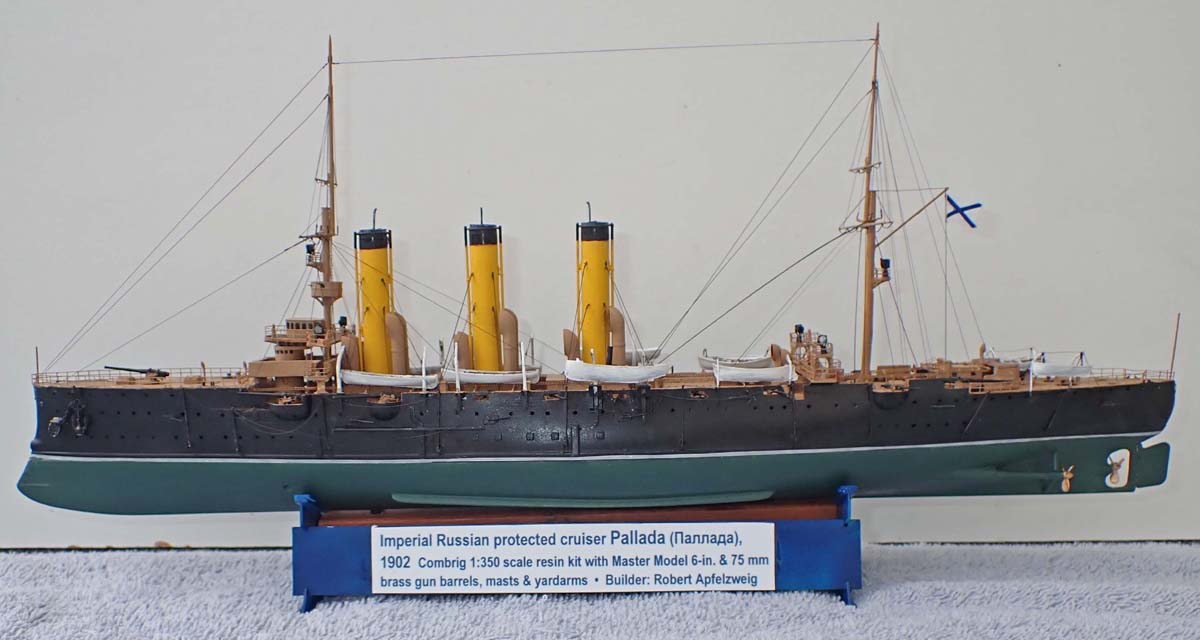
1/350 protected cruiser Pallada (Combrig)
|
by Robert Apfelzweig |

1/350 protected cruiser Pallada (Combrig)
The Pallada was a 6800-ton protected cruiser build in St. Petersburg in the late 1890s, the first of three in its class, which includes the much more famous Aurora, now a museum ship in the same port city. It and its sistership Diana were assigned to the Russian First Pacific Squadron based in Port Arthur. When the Russo-Japanese war broke out in 1904, the ship was damaged by torpedoes and unable to escape the Port Arthur harbor; its guns were offloaded to become defensive shore batteries but the ship was sunk in shallow water by Japanese siege guns as the port was captured. Raised after the war by the Japanese, she was towed to Japan, repaired and incorporated into the Imperial Japanese Navy and renamed the Tsugaru. Used as a training vessel and minelayer, she was sunk as a target in 1924.Combrig's resin kit of this ship is generally well-designed but characterized by the same poor engineering of photoetch frets as I have found on other recent Combrig kits. The fret is labeled as being for the Aurora, and several parts shown in the assembly instructions are missing from the frets, whereas a few others are incorrectly sized (and the photoetch includes 6-in. gun shields, which only the Aurora carried). There are no railings provided. I finished out my Pallada with Master Model 6-in. (152mm) and 75-mm brass gun barrels, upper masts and yardarms, and spare 2-bar railing with a few miscellaneous scratch-built details. The assembly instructions themselves are of average quality, notably inferior to those in more recent kits such as the Dupuy de Lome but better than in older kits (several images show where the parts are located after attachment, reducing to some extent the ambiguity of location). Combrig provides no painting scheme, but based on that photo and my knowledge of other Russian warships from the same period, I selected a somewhat reflective black for the upper hull, dark green for the lower hull, buff for the superstructure and masts/yardarms, wood tan for the decks, reddish-brown for small upper platforms presumably covered in linoleum, white for the small boats and their above-hull davits, and yellow for the funnels beneath the black caps. The white waterline boot topping is too wide, but it was a homemade decal (as is the flag) and I didn't think I could manage its attachment if I had cut it any narrower.
